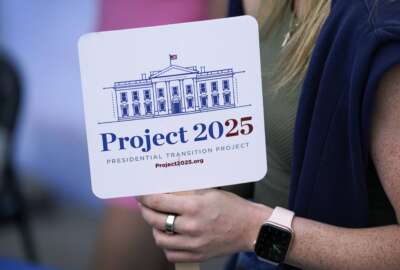Government people say they want to emulate the customer experience citizens get from the private sector. But sometimes government service can make the private sector look pale.
I’ll summarize a case in point with two words: Air travel.
Global Entry is a 10-year-old program of Customs and Border Protection. But it fits in squarely with the Trump administration’s customer service (CX) initiative. CX is a big part of the President’s Management Agenda. The PMA designated 13 departments — including Homeland Security and CBP in particular — as “high impact” service producers. And a framework for CX has been added to circular A-11, the Office of Management and Budget guidance document on budget preparation.
In my recent interview with John Wagner, CBP’s deputy executive assistant commissioner for field operations, he explained how facial recognition is being added to Global Entry to further speed things at passport control for those arriving into the U.S. Wagner received a Service to America Medals award for his work a couple of years ago.
I’m not a frequent international traveler, but I’ve been traveling abroad occasionally since I was a teenager. I recall the horror of customs clearance lines after scampering out of the depths of a 747. I remember one time returning on an 11-hour flight with my wife. We’d been in first class on TWA. The luxurious feeling of that crossing — with its wide loungers, infinite legroom, canapés, champagne and standing rib roast — dissipated within moments of encountering the noisy chaos at JFK. Customs in those days put everyone in steerage.
Last week was my first experience with Global Entry and facial recognition. We were returning from Rome to Philadelphia. We were the first to reach the Global Entry kiosks. (Walking up stairs is faster than taking the escalators). The instructions were clear. We slid our passports into the readers. We pressed four fingers on the glass and peered at the camera. The online declaration form took seconds to complete. Seconds later, out popped a receipt. An officer at the other end of the room snatched up the receipts and we emerged, blinking, into the still-empty baggage claim cavern. I was actually wondering if we’d done something wrong it went so fast. “Cool, I can open this bottle of grappa now!” I thought.
A downside is that with the old, slow clearance process at least the bags were already on the carousel by the time you got through. Now we had a 20-minute wait for the bags.
The upgraded CBP system compares your face in the camera with the face on your passport. I’d asked Wagner how two low-resolution pictures from different angles could possibly be compared in any meaningful way. He explained, the system isn’t looking at the image per se. Facial recognition algorithms look at facial geometry and the distances between certain points — and industry is constantly improving the algorithms. They can correct for perspective, or distance from the lens, and angle now in a way they previously could not.
The process is fast in part because of the system architecture. The kiosks don’t compare your prints and data to the universe of travelers, just to the people on that day’s passenger manifest.
CBP’s program shows you need a combination of imagine, desire to improve, and technology savvy to move along customer service. It shows the process of improvement should continue beyond initial deployments. When those factors come together, the results are astounding.
By contrast, no one would argue that airline customer experience is anything close to ideal. Airlines operate in a brutally competitive environment. To their credit, they get millions of, it seems, rude people a day from Point A to Point B safely and at low cost. Yet you couldn’t say the experience is something to look forward to.
Copyright
© 2024 Federal News Network. All rights reserved. This website is not intended for users located within the European Economic Area.






